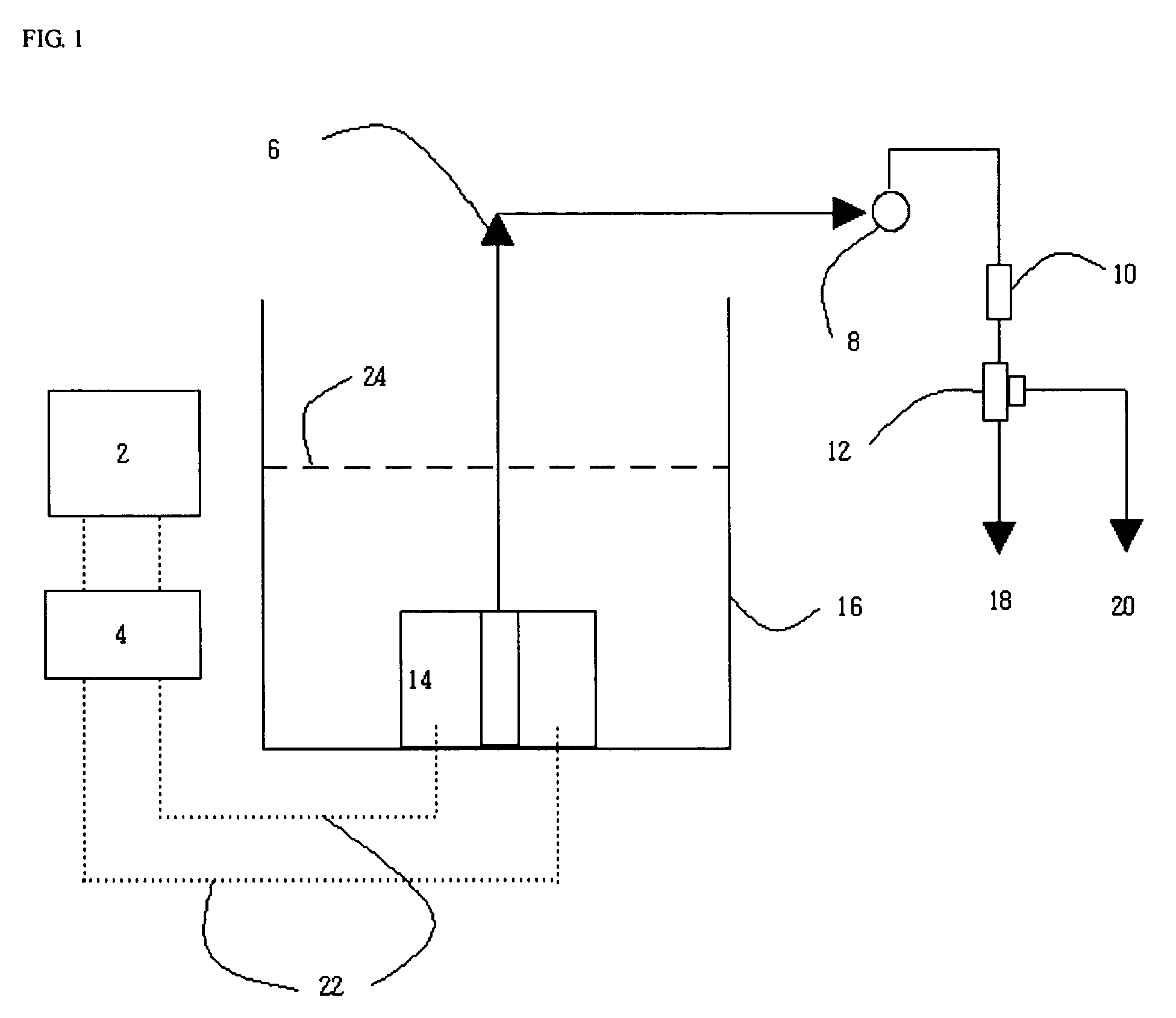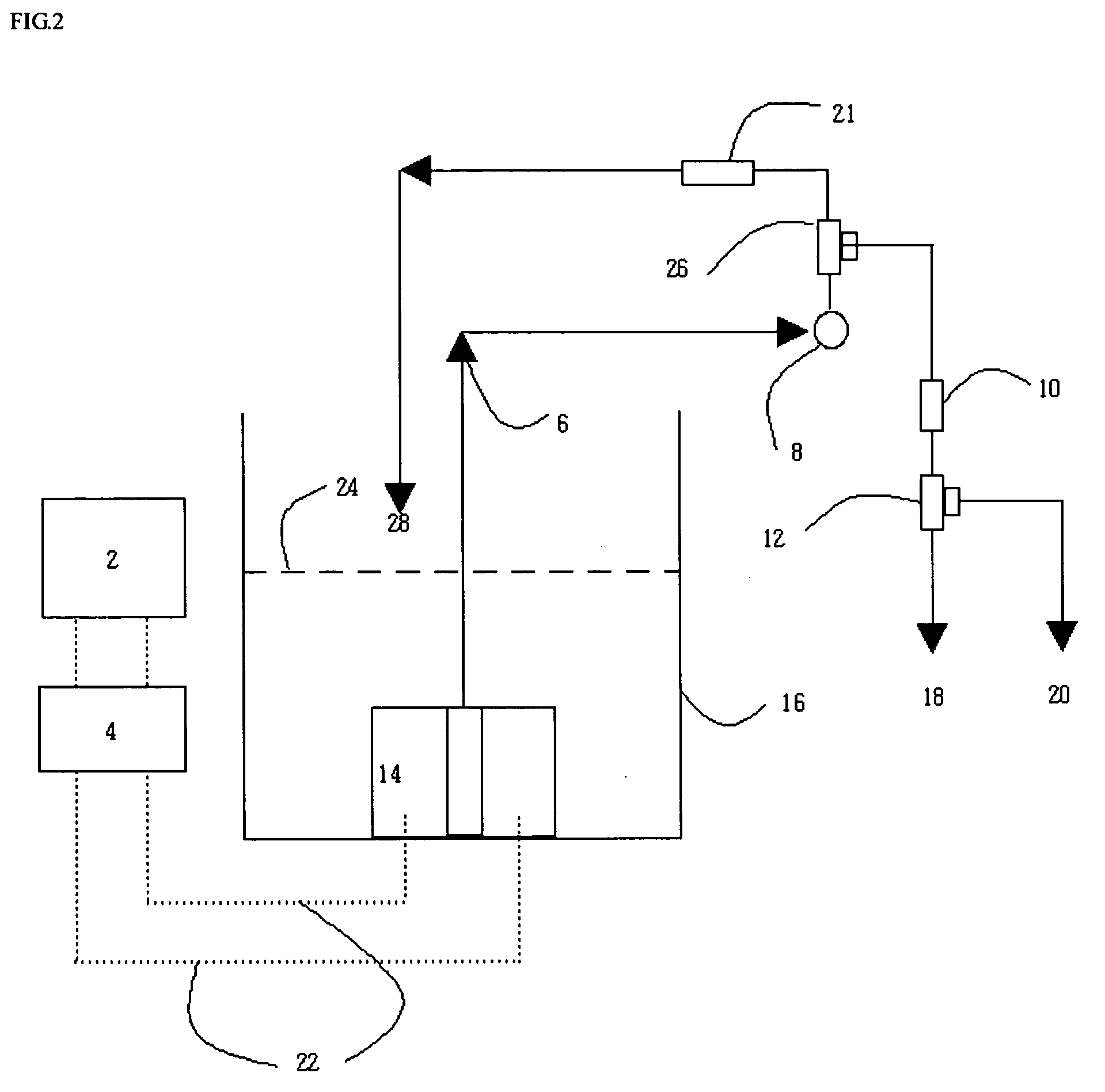Submerged-type electrosorption-based water purification apparatus and method thereof
a water purification apparatus and submerged type technology, applied in the direction of electrochemical methods, isotope separation, photographic processes, etc., can solve the problems of deteriorating adsorption capacity, inability to achieve adsorption of ions into pores during the operation of the apparatus, and conventional desalination methods are susceptible to the risk of electrode dryness, etc., to achieve the effect of reducing energy consumption and enhancing desalination efficiency and recovery ra
- Summary
- Abstract
- Description
- Claims
- Application Information
AI Technical Summary
Benefits of technology
Problems solved by technology
Method used
Image
Examples
first embodiment
[0056]FIG. 1 is a schematic block diagram of a submerged-type, electrosorption-based water purification apparatus in accordance with the present invention. The electrosorption-based water purification apparatus comprises an electrosorption-based purification reactor 14 including an negative electrode to adsorb cations and a positive electrode to adsorb anions, among inorganic ions in water; an inflow water storage / purification reaction bath 16 storing water introduced into the electrosorption-based purification reactor 14 up to a water level 24, and having the purification reactor 14 submerged therein; a DC power supply system 2 for supplying a DC voltage of 0.1 to 2.0 volts, preferably 0.8 to 1.4 volts, to the electrosorption-based purificafion reactor 14; voltage-applying lines 22 for applying positive and negative DC voltages to the purification reactor 14; a suction pump 8 forming a flow path of water (an arrow direction indicated by reference numeral 6 in FIG. 1) by reduced pre...
second embodiment
[0060]FIG. 2 is a schematic block diagram of a regenerative recycling, submerged-type, electrosorption-based water purification apparatus in accordance with the present invention. The electrosorption-based water purification apparatus comprises an electrosorption-based purification reactor 14 including an negative electrode to adsorb cations and a positive electrode to adsorb anions, among inorganic ions in water; an inflow water storage / purification reaction bath 16 storing water introduced into the electrosorption-based purification reactor 14 up to a water level 24, and having the purification reactor 14 submerged therein; a DC power supply system 2 for supplying a DC voltage of 0.1 to 2.0 volts, preferably 0.8 to 1.4 volts, to the electrosorption-based purification reactor 14; voltage-applying lines 22 for applying positive and negative DC voltages to the purification reactor 14; a suction pump 8 forming a flow path of water (an arrow direction indicated by reference numeral 6 i...
third embodiment
[0067]FIG. 3 is a schematic block diagram of a countercurrent, regenerative recycling, submerged-type, electrosorption-based water purification apparatus in accordance with the present invention. The electrosorption-based water purification apparatus comprises an electrosorption-based purification reactor 14 including an negative electrode to adsorb cations and a positive electrode to adsorb anions, among inorganic ions in water; an inflow water storage / purification reaction bath 16 storing water introduced into the electrosorption-based purification reactor 14 up to a water level 24, and having the electrosorption-based purification reactor 14 submerged therein; a DC power supply system 2 for supplying a DC voltage of 0.1 to 2.0 volts, preferably 0.8 to 1.4 volts, to the electrosorption-based purification reactor 14; voltage-applying lines 22 for applying positive and negative DC voltages to the purification reactor 14; a suction pump 8 forming a flow path of water (an arrow direct...
PUM
| Property | Measurement | Unit |
|---|---|---|
| DC voltage | aaaaa | aaaaa |
| distance | aaaaa | aaaaa |
| pressure | aaaaa | aaaaa |
Abstract
Description
Claims
Application Information
 Login to View More
Login to View More - R&D
- Intellectual Property
- Life Sciences
- Materials
- Tech Scout
- Unparalleled Data Quality
- Higher Quality Content
- 60% Fewer Hallucinations
Browse by: Latest US Patents, China's latest patents, Technical Efficacy Thesaurus, Application Domain, Technology Topic, Popular Technical Reports.
© 2025 PatSnap. All rights reserved.Legal|Privacy policy|Modern Slavery Act Transparency Statement|Sitemap|About US| Contact US: help@patsnap.com



